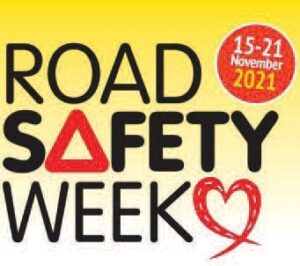We often run articles on winter driving concentrating on snow and icy conditions, but autumn and winter for most of the UK means wet, cold, and often foggy conditions.
Standing Water
Aquaplaning is caused by driving too fast into surface water. When the tyre tread cannot channel away enough water, the tyre(s) lose contact with the road and your car will float on a wedge of water.
Aquaplaning can be avoided by reducing speed in wet conditions and having the correct tyre pressure and tyre tread depth to maximise your tyres’ ability to maintain their road grip. If you should experience your car aquaplaning then ease off the accelerator and brakes until your speed drops sufficiently for the car tyres to make contact with the road again. Do not use Cruise Control where there is standing water as you are more likely to aquaplane.
Each year we see images on the television of cars stranded in the middle of deep floods. You may, like me, think ‘why did they drive into the flood?’. It can be tempting to chance crossing a flooded road, especially when turning back and taking an alternative may take a long time. We tend to be overly optimistic when faced with such decisions. Don’t attempt to cross if the water seems too deep. If you are not sure of the water’s depth, look for an alternative route.
Fog
Autumn and winter mornings often bring fog. Avoid driving in fog unless your journey is absolutely necessary. Fog is one of the most dangerous weather conditions. An accident involving one vehicle can quickly involve many others, especially if they are driving too close to one another.
If you must drive:
• Allow plenty of extra time for your journey.
• Check your car before you set off. Make sure everything is in good working order, especially the lights.
• Reduce your speed and keep it down
• Switch on headlights and fog lamps if visibility is reduced. If you can see the vehicles behind you, switch off your rear fog lamp to avoid dazzling them.
• Use the demister and windscreen wipers.
• Do not ‘hang on’ to the rear lights of the car in front as you will be too close to be able to brake safely.
• Switch off distracting noises and open the window slightly so that you can listen for other traffic, especially at crossroads and junctions.
• Beware of speeding up immediately when visibility improves slightly. In patchy fog you could find yourself ‘driving blind’ again only moments later.
• If you break down, inform the police and get the vehicle off the road as soon as possible.
Deer
Collisions between vehicles and deer peak in October to December. The highest risk times are from sunset to midnight, and then the hours either side of sunrise. Look out for Deer Warning Signs and drive with caution, especially at the peak times of the day for deer.
After dark, do use full-beam when there is no opposing traffic. The headlight beam will illuminate the eyes of deer on or near a roadway and provide greater driver reaction time. BUT, when a deer or other animal is noted on the road, dim your headlights as animals startled by the beam may ‘freeze’ rather than leaving the road.
If a collision with the animal seems inevitable, then hit it while maintaining full control of your car. The alternative of swerving into oncoming traffic, or off of the road surface, could be even worse.
Rural Driving
More deaths occur on rural roads than on urban ones. In 2019, there were 931 fatal accidents on rural roads compared to 627 on urban roads.
The number of serious and slight injury collisions is higher in urban areas; in 2019, there were 78,114 on urban roads and 33,707 on rural roads.
These figures show that while the number of collisions is higher in urban areas there is a greater chance of dying on rural roads, with 56% of the fatal accidents in 2019 occurring on these roads.




